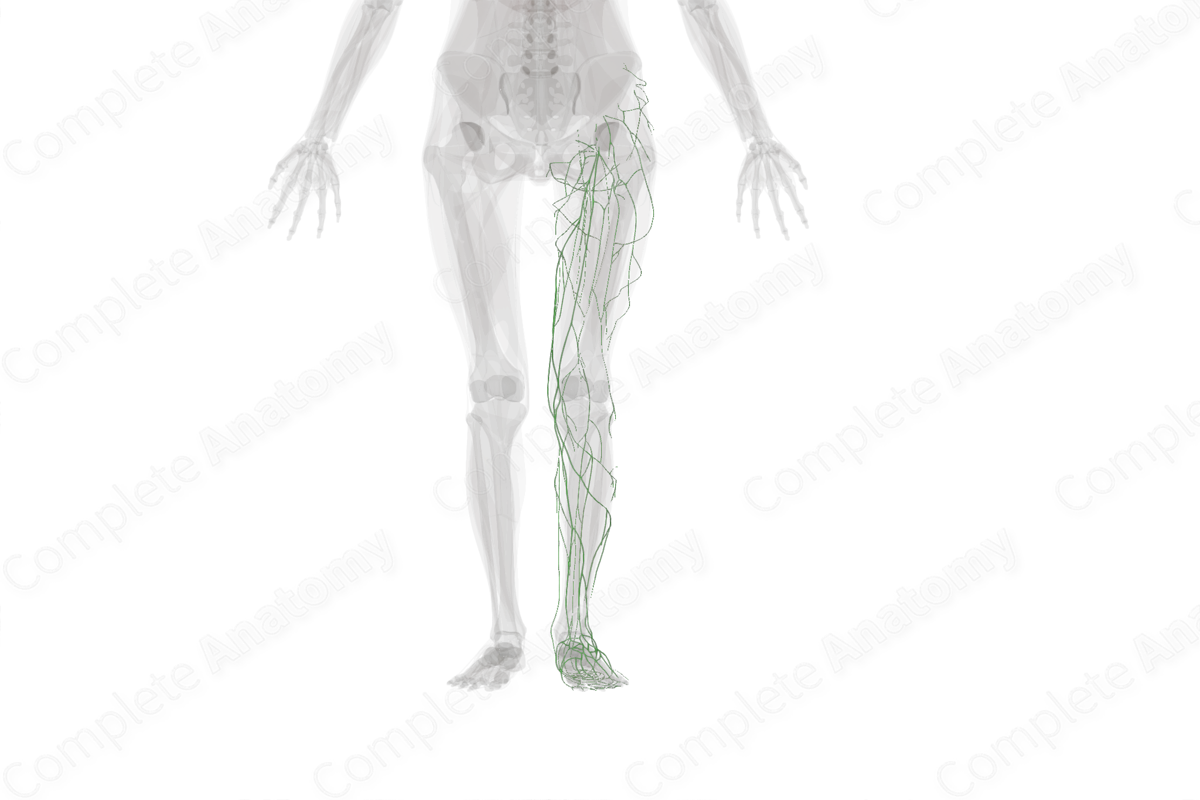
Description
The lymph vessels of the lower limb form a drainage system parallel to the blood vessels. The lymph vessels are responsible for removing cellular debris and draining interstitial (or extracellular) fluid that has escaped from the cardiovascular system and returning it to the venous system.
Lymphatic drainage of the lower limb can be categorized into superficial (subcutaneous) and deep systems. The superficial system includes the superficial inguinal lymph vessels, as well as the anteromedial and posterolateral lymph bundles. The anteromedial superficial lymph vessels of the lower limb are the major collectors of the lower limb. They drain all regions of the lower limb, except for the lateral border of the foot and a narrow strip along the posterior leg, directly to the superficial inguinal lymph nodes. The posterolateral superficial lymph vessels, on the other hand, drains lymph from the lateral border of the foot and the posterior leg and accompany the small saphenous vein. These vessels drain into the superficial popliteal nodes, which send lymph to the deep popliteal nodes and directly to the deep inguinal lymph nodes (Schünke et al., 2006).
The deep system drains lymph from the muscles and joints via the deep inguinal and deep popliteal lymph vessels.
References
Schünke, M., Ross, L. M., Schulte, E., Lamperti, E. D., Schumacher, U., Rude, J., Voll, M., Telger, T. C. and Wesker, K. (2006) Thieme Atlas of Anatomy: General Anatomy and Musculoskeletal System. Thieme Atlas of Anatomy: Thieme.




